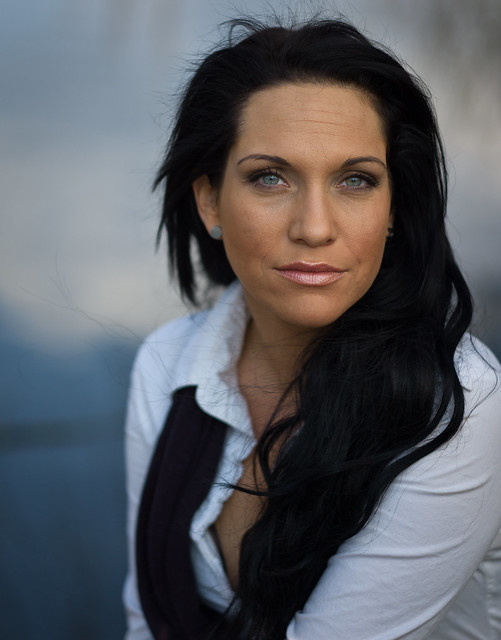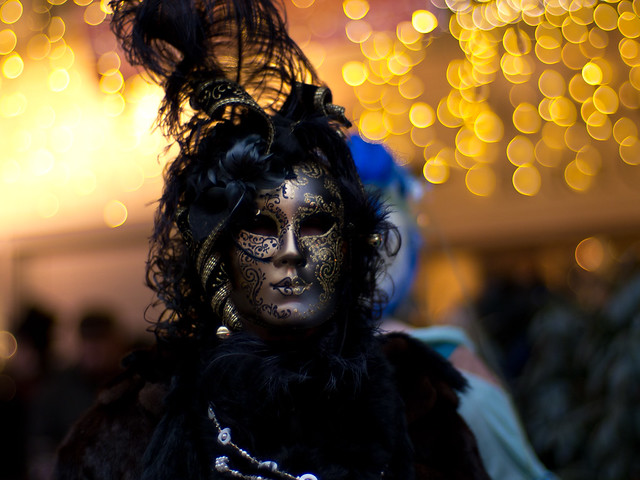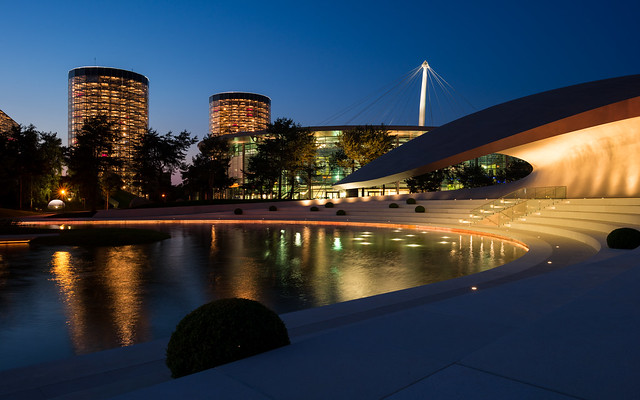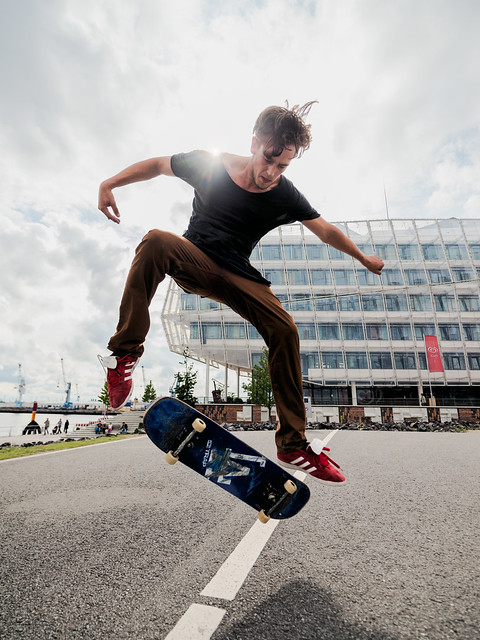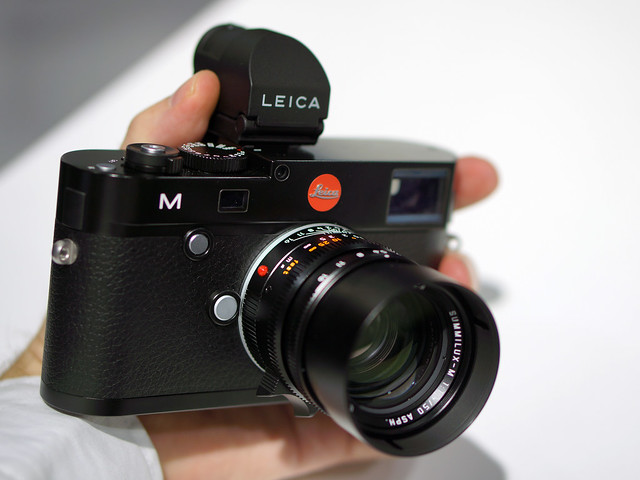Let me first state that I am aware that this article propably may trigger a controverse discussion but if you have been linked to this article by forums or rumor sites, you propably already know that many open disussions about Leica products tend to get emotional. So I will try to concentrate on objective facts even though I am conscious that this writing is influenced by individual experience as well.
To better understand my point of view (and perhaps compare it to your personal vision), please let me recap with some distinctive experiences making up my mind before we come to the punch line:
After the Leica M9 was introduced in 2009 and all the hype about this camera I was very curious to make up my own mind what it means to shoot with a digital rangefinder. I already put aside the amount of money to buy into the M system with a M9 and about two lenses and spent a couple of days in 2010 intensively shooting the M9 and in another session in 2011 with a friend dedicated to the M9. Of course there were some nice and intensive shots like these:

But there were also (too) many situations, where I missed the "magic moment" or at least the desired focus point or could not make the photo at all. So after this experience I felt that due to the shortcomings of the rangefinder concept in general and the M9 in particular (or my shortcoming in using it), too much of my photographic scope was not met: Too slow for "action" photography, missing ability to shoot with tele and macro lenses, no live view, no video, insufficient ISO performance, moiré issues, display and processor performance far out of time, short battery run-time and many reports about focus calibration issues with wide open lenses like the Noctilux f/1.0 and f/0.95 ASPH. So I decided to skip the M9 and build my work on other cameras.
But since this experience I was dedicated to the character, the art work options and quality of some Leica lenses. I bought the Noctilux F1.0 (and sold it about two months later due to too many drawbacks when used wide open) admired the Noctilux f/0.95 ASPH for its optimizations (but could resist to spend 8K € for that) and the Summilux 50mm f/1.4 ASPH (that I still keep and protect like my eye ball) although I used them only on crop sensors (which helped to avoid some deficiancies of the Noctilux f/1.0). Here are some of my favourite shots with these lenses:
Noctilux f/1.0 on GH2 at F1.4
Noctilux f/1.0 on GH2 at F1.0
After the Noctilux f/1.0 experience and some tests with the Noctilux f/0.95 ASPH I decided to hunt for the Summilux 50mm f/1.4 ASPH as for me it still provides the best compromise between lens performance (sharpness/contrast, DOF potential, bokeh quality) compactness and price tag. It is pin sharp already at open aperture and renders an extremely creamy bokeh with most beautiful and neutral circles of confusion produced by highliights in the out-of-focus area:
Leica Summilux 50/1.4 ASPH on GH2:
In late 2011 I decided to switch from MicroFourThirds (Lumix GH2) to Sony NEX due to the following reasons:
- Quite limited dynamic range of the GH2 (although in this aspect at base ISO it already played in the same league as the M9 and the Canon 5D Mk II)
- Only little potential of mFT sensors to play with DOF and bokeh. For my taste, playing with bokeh was limited only to using a 50mm Summilux or Noctilux for portraits or close up and telephoto work
- Although excellent video performance of the GH2, I still missed a 1080p60 video mode to give slow-motion more room
In 2012 the Sony NEX-7 and two SLR Magic HyperPrime CINE lenses where another important experience for me:
- The NEX-7 offered an - at that time - amazing dynamic range of 13.4 F-stops at base ISO. One year later, the full frame and six times more expensive M 240 still does not reach a better score
- The NEX-7 provided an incredible resolution of 24 MP and due to its thin AA-filter it was also able to deliver this sharpness potential (for the price of some moiré issues as well) when used with excellent lenses
- The NEX-7 offered 1080p60 AVCHD video allowing slow-motion at FullHD
- Combined with the HyperPrime CINE 50mm T0.95 (f0.9, covering full frame) the NEX-7 was able to deliver portraits at available light as sharp and with a shallow DOF and creamy bokeh comparable to what you have seen so far from full frame DSLRs with a 85mm portrait lenses at about f/1.4.
- Equipped with the HyperPrime CINE 35mm T0.95 (covering APS-H) or a 50/1.4 DSLR lens + Metabones Speed Booster, the NEX-7 is able to deliver a comparable picture language and low light performance to a 50mm f/1.4 ASPH Summilux on a full frame camera.
Leica Summilux 50/1.4 ASPH on Sony NEX-7:
SLR Magic HyperPrime CINE 50mm T0.95 on NEX-7:
SLR Magic HyperPrime CINE 35mm T0.95 on Sony NEX-7:
(Click on the images in order to see higher resolutions)
Another important experience in 2012 was the Nikon D800E. It took me to an even higher level in terms of image quality:
- Its 36 MP full frame sensor was able to cover an incredible large dynamic range of 14.3 F-stops (already close to the perception of the human eye) with an ISO performance about 1.5 stops better than the NEX-7 according to DxOMark,
- delivering saleable results even at ISO 6400.
Unfortunately its AF module as well as many lenses were not able to
catch up with that terrific performance boost in all situations
Nikon D800E with AF-S Nikkor 24mm f/1.4 G ED @ f6.3:
Nikon D800E with Zeiss Distagon T* 15mm f/2.8:
Nikon D800E with AF-S Nikkor 85mm f/1.8 G @ F11:
(Click on the images in order to see higher resolutions)
Even though I am quite sure that at the moment there is no affordable alternative to the D800E in terms of image quality especially for landscape and studio work, where you can use live view with magnification to set focus perfectly on the intended point, I decided that this is not the camera I will go on with.
Right after the first samples of the new M (type 240) were presented on the Photokina 2012 in Cologne, Germany, I felt that I need to recheck my opinion about Leica M. As I was quite frustrated at that time with the lack of ultra wide angle lenses for Sony NEX and some drawbacks of my Nikon D800E, I took a closer look to its specs.
The specs and new features of the new M sounded promising:
- 24 MP CMOS sensor with increased ISO performance and higher dynamic range
- live view with optional EVF and focus peaking allowng to use also adapted (tele, macro etc.) lenses without rangefinder coupling
- better overall performance due to more powerful "Maestro" processor, longer lasting battery
- FulHD video
So I immediately placed a preorder at my favourite dealer and started waiting...
Meanwhile the new 10-18mm f/4.0 OSS zoom lens from Sony entered the maket, which was able to fill the gap of an eagerly awaited UWW lens:
Sony 10-18mm F4 OSS zoom lens @ 10mm F5.6 on Sony NEX-7:
Together with the excellent Sony/Zeiss Sonnar 24mm f/1.8 and the best-value-for-price Sony 50mm f/1.8 OSS, Sony offers three excellent native AF E-mount lenses (two of them with OSS) making this system attractive also for ambitious amateurs and professionals as a lightweight, powerful set for travelling documentation and street shooting.
In 2012 Sony also proved with the RX1, that they are able to deliver a very powerfull and compact full frame camera with an excellent 35mm f2.0 Zeiss lens at about the same price you pay for a Leica Summicron 35mm f2.0 ASPH (lens only...). With the VG900 they followed up with a full frame (video) camera with E-mount and all signs indicate that they will be the first supplier after Leica delivering a mirrorless full frame system camera.
So, coming back to the punch line, after waiting perhaps too long for a delivery, these are the points that make me unsettled to go for the M now or to wait for "the better M":
- Even now after about one and a half year the APS-C sized sensor in the Sony NEX-7 scores with a similar dynamic range and color depth compared to the new full frame sensor of the "M" and from my experience the DxOMark sensor scores are quite reliable and give a good idea what you can expect in practise. The disadvanage of the NEX-7 in ISO performance of less then one stop compared to the Leica M can be often compensated with brighter lenses (e.g. the HyperPrime CINE 35mm T0.95) or OSS available for some lenses of the NEX system. After examples at higher and highest ISO showing banding in shadows, I still hope this can be fixed with another M firmware upgrade.
- Sony has the potential to deliver the full frame NEX in a timely manner with a sensor most propably even better than their current 24 MP full frame sensor (already outperforming Leica's M 240 sensor in terms of dynamic range and ISO performance with about one F-stop)
- The OLED based EVF of the upcoming NEX-7n is rumored to deliver already 3.8 million dots (about 2.7x better resolution compared to the aged EVF-2 available for the Leica M 240) and it is likely that this EVF will also be part of the FF-NEX. From my point of view, the rangefinder concept is too limited when shooting lenses with extremely shallow DOF on current and future sensor resolutions. Even though it would mean, that a replacement would no longer be a M ("Messsucher"), I would prefer to use the space for the optical viewfinder and replace it with a truely good EVF or a hybrid optical/electronical viewfinder concept similar to that found in a Fuji X Pro 1 instead of attaching an additional hump on top of the camera.
- The liveview magnification of Leica M 240 is limited to the center of the image. It can not be moved around the frame. If you shoot from a tripod this means you either have to move the tripod or release the camera from the tripod ballhead in order to focus an object not in the image center and reframe + tighten again before taking the shot. If you use lenses with shallow DOF and some field curvature or adapt tilt/shift lenses to the camera, it is predetermined that you will not get the optimal focus on the desired point when reframing the image after focussing. For me this is one of the biggest shortcomings of the new M wasting potential of the LV. At the moment all voices say that this is a limitation of the sensor used in the M 240 and can not be fixed only by firmware - I hope they are wrong...
- Why no Auto-ISO when a fixed exposure time is selected (this is especially a drawaback when recording movies)?
- The current video implementation shows that Leica still will need some more time and listening to market requirements (and perhaps additional firmware updates) before this feature will attract a larger number of film makers permanently. Meanwhile the others go already for 4K...
At the moment, primarily the option to shoot 50mm f/0.95 lenses on full frame is left attracting me and from my point of view that is not enough to justify buying it for an estimated usage time of about one year until further mirrorless full frame system cameras will enter the market. Most people agree that the M 240 is a big improvement to its predecessor in nearly every aspect and starts offering new features by still keeping the line for users dedicated to a rangefinder. There are also many people out there with a different scope giving lots of reasons why the M is the best choice for them. It may have to do something with the challenge to create nice pictures with limited but extravagant gear. As these are more emotional aspects, you find an interesiting article about that here: Object of Desire: The Psychology Behind Wanting Leica
Albeit in the beginning I already stated that I try to focus more on objective facts than emotions when choosing my gear, please take it as my personal view.
You are invited to comment on this post here.




